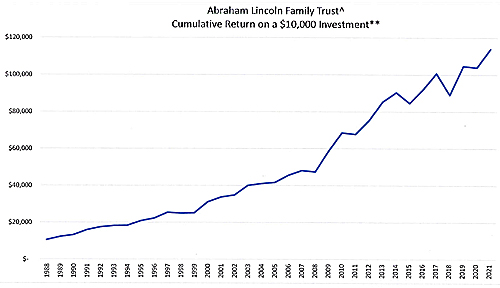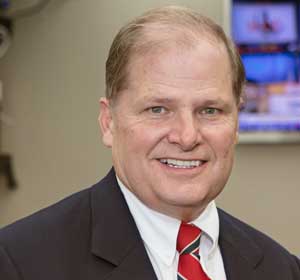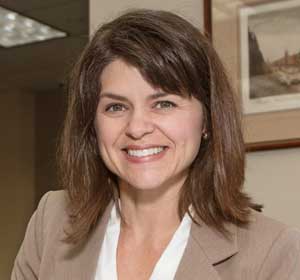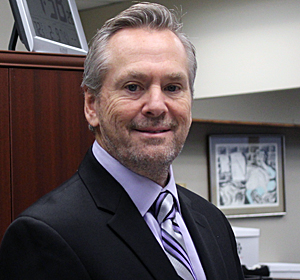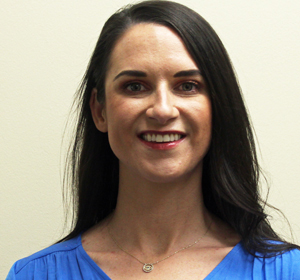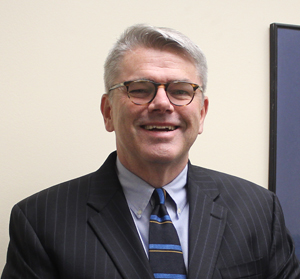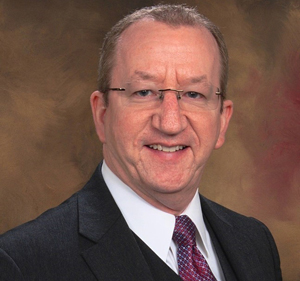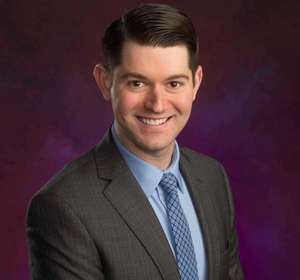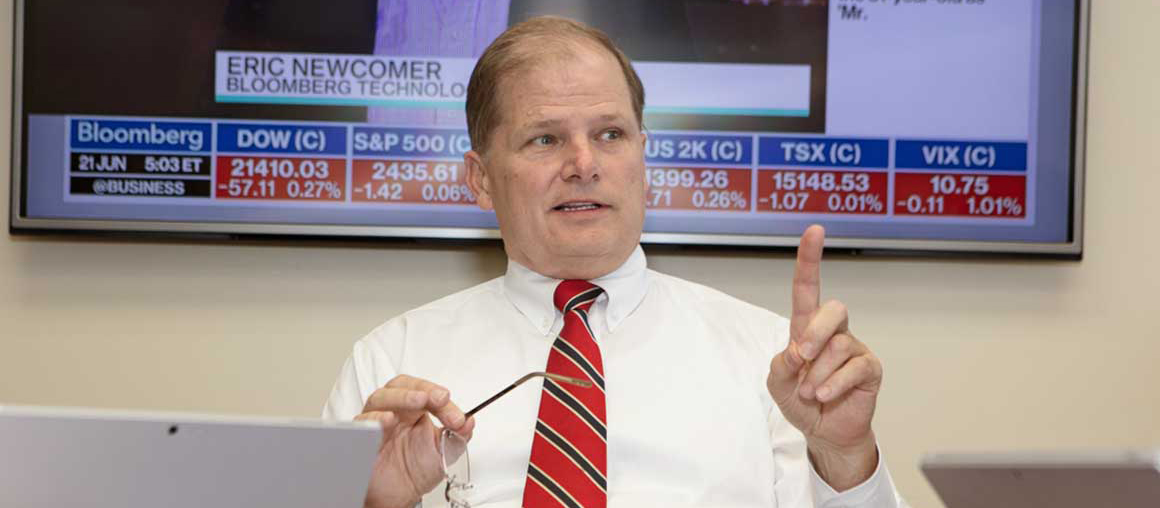Welcome to TERRIL & CO.
Terril & Company is an independent wealth management company founded in 1979 by John “Joe” Terril. Since then, referrals from satisfied clients and third-party professionals have fueled virtually 100% of its growth.
The company takes a highly personal approach to serving clients, which typically include high net worth individuals, trusts and private/corporate retirement plans.
Members of the Terril staff answer their own phones and truly offer close, personal service.
The investment selections Terril makes are based solely on their potential to produce positive, long-term returns for clients. The firm derives 100% of its revenue from client fees and 0% from commissions tied to the sale or purchase of securities.
Fundamentals foremost; patient, often contrarian investing
Recognizing that “bandwagon” investing and playing momentum historically result in catastrophic losses, Terril & Co. searches for investments with characteristics or catalysts not fully appreciated by markets. As a long-term investor (usually three years or more) Terril will hold out-of-favor investments until positive change in their fundamentals becomes evident. While Terril hunts for unrecognized investment opportunities, it stows investor capital in liquid short-term investments to produce income and protect principal.
Terril & Co. believes that its willingness to make disciplined investing decisions apart from “the crowd” is central to its success. Why? Because many professional money managers chase performance and buy the ”hot” investment trends of the day.
Psychologically, it’s far easier for managers to buy the investments their peers are buying because being wrong with “the crowd” is more comfortable than being wrong while standing alone.
Many investors – professionals included – are apt to underestimate investment risk. In bull markets, they are eager to buy more of what is high in price.  They tend to manage to performance benchmarks and are more inclined to expand risk boundaries. In bear markets or with out-of-favor assets, their evaluations often fail to reflect the truism that many times, when an investment is low in price, significant financial risk is already eliminated.
They tend to manage to performance benchmarks and are more inclined to expand risk boundaries. In bear markets or with out-of-favor assets, their evaluations often fail to reflect the truism that many times, when an investment is low in price, significant financial risk is already eliminated.
Seeking 3X the reward for risk assumed
Terril & Co. seeks to manage risk by searching for investments with the minimum long-term potential to return three times the reward for the risk assumed.
It evaluates all forms of potential investments: equities and fixed income (domestic/foreign); preferred stocks (convertible/straight); commodities; exchange traded funds (ETFs); precious metals; MLPs and GPs of exchange-listed energy infrastructure trusts; real estate investment trusts (REITs); venture capital; and private placements.
Terril’s disciplined approach helps to remove emotion from investment decision-making. It tends to buy when the price reaches a favorable risk/reward threshold, which can lead Terril to being lightly exposed to markets that it believes are over-valued. The firm’s independence also frees it to take profits in successful investments when peers fear being underinvested.
Targeted annual return goal
Year to year, Terril & Co. seeks to generate 3% to 5% real growth (over and above inflation, taxes and fees) in client portfolios. Historically, wealth managers who consistently deliver investment returns in this range are rated in the top tier of investors.
Terril’s standard for acceptable investment return differs markedly from that of industry-driven money managers. In a year when the S&P 500 declines 21%, those managers are pleased to report a 17% loss to clients.
Fee scale reflects total return sensitivity
Conscientious cost control and an equitable fee structure help boost the net return to clients. Fees, calculated and billed quarterly, are entirely negotiable. Terril does not bill in advance. An advisory contract can be cancelled at any time without penalty.
The firm derives 100% of its revenue from client fees. It does not charge or accept any type of commission or other compensation for the sale or purchase of securities.
Fee scale
| Market value of managed assets | Annual fee as a percentage of managed assets |
|---|---|
| Up to $1 million | 1.0% |
| $1 million to $3 million | 0.75% |
| $3 million to $5 million | 0.6% |
| $5 million and above | 0.5% |
*Illustration: Presuming the negotiated fee to manage a $1 million portfolio is 0.75%, the cost to the client is $7,500 on an annual basis. If a client can earn 5% self-managing a portfolio, Terril & Co. needs to earn 5.75% to justify its involvement.
Clients receive an easy-to-understand, two-page investment performance report every quarter. The report clearly presents eight key financial metrics.
- Current total value of assets in portfolio
- Current asset allocation (expressed as a percentage of total portfolio)
- Bond call/put information and maturities
- Accrued dividends and interest
- Deposits and withdrawals made during the quarter
- Portfolio gain or loss during the quarter (expressed in U.S. dollars)
- Five-year history of quarterly rates of return (deposits and withdrawals time-weighted)
- Annual rate of return (after four quarters)
If your performance report sparks a question, please call. Your call will be answered by one of our professionals who is eager to help.
Terril also welcomes client meetings to discuss investment performance and strategy.
To review a sample quarterly report, click here.
| 1,400 | Bristol-Myers Squibb Co. | 100,730 |
| 1,500 | Newmont Mining Corp. | 70,800 |
| 1,750 | Verizon Communications | 68,950 |
| 2,000 | ClearBridge MLP Midstream FD Inc | 66,720 |
| 3,000 | Vistra Electric Group | 69,600 |
| 3,500 | Cleveland Cliffs Inc. | 56,385 |
| 8,000 | Plains GP Holdings | 99,520 |
| 200 | US Bancorp Series A Pfd FLT 3.5% | 163,138 |
| 8,200 | Crestwood Equity Partners LP 9.25% | 71,012 |
| 15,000 | Quadratic Inflation Hedge ETF | 339,150 |
| 25,000 | Aberdeen Asia-Pacific Income Fund | 65,750 |
| 100,000 | Textron 4.3% 3/1/2024 | 99,000 |
| 140,000 | Keycorp Capital I FRN 5.49386% 7/1/2028 | 126,700 |
| 175,000 | Int' Lease Fin FLT 3.23% 12/21/2065 | 102,375 |
| 50 | Ounces Gold | 91,243 |
| Central Tst & Inv. Money Market Fd | 157,680 | |
| 75,000 | General Dynamics 3.375% 5/15/2023 | 74,588 |
| 90,000 | Treasury Bills 6/22/2023 | 88,065 |
| 100,000 | General Mills Inc. FLT 5.08914% 10/17/2023 | 100,400 |
| Accrued Interest Earned | 5,126 | |
| Accrued Dividends | 3,294 |
| CURRENT TOTAL | $2,020,225 |
|---|
| Quarter Ending: | 2018 | 2019 | 2020 | 2021 | 2022 |
|---|---|---|---|---|---|
| March | -.87% * | 7.59% * | -23.25% * | 9.59% * | 6.26% * |
| June | -0.46% * | 1.55% * | 12.48% * | 3.03% * | -6.10%* |
| September | 0.45% * | 1.52% * | 3.45% * | -2.32% * | -4.06% * |
| December | -10.72% * | 5.90% * | 11.26% * | 3.21% * | 3.34% * |
| Annual | -11.51% * | 17.46% * | -0.64% * | 13.83% * | -1.08% * |
| 2017 | 9.44% * | 2012 | 10.91% * | 2007 | 5.65% * | 2002 | 3.21% * | 1997 | 13.76%* | 1992 | 9.93%* |
|---|---|---|---|---|---|---|---|---|---|---|---|
| 2016 | 8.71% * | 2011 | -1.19% * | 2006 | 9.33% * | 2001 | 8.56% * | 1996 | 7.02%* | 1991 | 20.55%* |
| 2015 | -6.4% * | 2010 | 17.06% * | 2005 | 1.56% * | 2000 | 23.88% * | 1995 | 13.90% * | 1990 | 8.04%* |
| 2014 | 6.00% * | 2009 | 23.55% * | 2004 | 2.41% * | 1999 | 0.56% * | 1994 | 0.36%* | 1989 | 16.36%* |
| 2013 | 13.45% * | 2008 | -1.42% * | 2003 | 15.11% * | 1998 | -1.65% * | 1993 | 4.08% * | 1988 | 5.05% * |
| ** The above performance are the actual results of a $5-$10 million retirement plan under our management, is net of any fees and includes reinvestment of earnings and is managed with a balanced investment objective; results were achieved with the following asset ranges: Equities 0-50%; Fixed Income 15-95%; Cash Equivalents 0-80%; and Other 0-10%. We believe the above to be indicative of our average historical results. However, such results are not guaranteed. Future results may be materially different. It is possible for accounts to lose money. |
Video Blog: Current Thoughts on the Economy

Written Blog: Thoughts on the Economy
Friday, January 13, 2023
Predictions for a slowdown in the world economy continue to appear to be premature. This may go down as the most predicted recession in history. We are not denying the possibility, we believe IF it comes, it is a late 2023 or 2024 event. How severe a recession is also open for serious debate. We are in the mild camp. Employment continues to be strong. Wage gains are becoming common place. Yes, high tech companies over hired in the boom. With the cost of money being almost free, they expanded into business areas they knew little about. The result of this is layoffs and terminations of employees. However, this “bad sign” for the economy seems to be unique to the high-tech area. Other industries continue to hire employees. The labor shortage is a long way from over. With more people working and earning more money it is a “good sign” for the economy.
On the inflation front there is no doubt inflation, for now, has slowed. But slowing inflation is not, solved inflation. A drop from 9% to 6% inflation is hardly anything to celebrate. The Federal Reserve target rate is 2%. We expect the Fed to continue to raise interest rates and keep them higher for longer. Some of the progress on inflation comes from a strong U.S. dollar. This makes buying on the international market cheaper. Recently, as talk accelerates about interest rates in the U.S. topping, the dollar has weakened. This can reverse the progress made on inflation. It becomes a classic catch-22 problem. Raise rates inflations slows. Lower rates inflation returns. This is the basis of our higher for longer prediction. The best outlook for inflation is the fact the growth of M2 money supply has slowed dramatically. The Fed is no longer printing money. We hope they maintain this discipline but must acknowledge political pressure could sway them. .
Investment markets, in our opinion, are moving towards being a little too bullish. Participants seem to believe inflation, interest rates, the economy, corporate earnings, the budget deficit, Russia, China, the crypto meltdown, the liquidity crunch is select areas, are all going to work out without any major problems. It is a leap of faith. We are most concerned about corporate profits. Past earnings were inflated by cheap money. It allowed firms to make acquisitions to grow profits. Re-financing billions in debt at lower and lower interest rates certainly helped. The environment now is completely different. Labor costs are surging. Cost of materials are higher. Cost of insurance, transportation etc. are all higher. It's difficult to see any growth of corporate profits. With higher interest rates calling for lower multiples on flat profits, we remain in the cautious camp towards stocks. The current bond market is fascinating. Investors are convinced inflation is coming down and thus interest rates will follow. They expect interest rates to go back to 1.5% on the short end and 2.75% on the long end. We completely disagree with this. Many pundits are calling for investors to buy 20- and 30-year bonds to lock in the rate at the 4% level. We are convinced this is exactly what an investor should not do right now. That area of the bond market produced 25% plus losses in 2022. .
We are bullish on gold. Relative to the destruction in value of paper currencies, gold is not expensive. We are NOT perpetual gold bugs. We only purchased gold stocks two years ago. For now, they are paying excellent cash dividends and generating good free cash flow. .
We are bullish on steel stocks, particularly CLF. There is much discipline in this area and the stocks are selling as if a horrible recession is already here. We like the fertilizer stocks. Prices of potash and phosphate are down. This appears to be fully reflected in the stock prices. .
After earnings season is over in the next 4/5 weeks, we will re-evaluate on thoughts. Bank stocks are intriguing. They are also selling in some cases as if the recession is here and they will be writing off millions in bad loans. They also benefit from higher interest rates. As mentioned, many are looking for lower interest rates. We disagree with this narrative and will monitor the bank stocks for increasing cash dividends and potential stock buybacks.
Client Security/Privacy
Terril applies physical, electronic and procedural safeguards that meet industry standards for client security. It does not warehouse sensitive data (such as social security numbers) in its firewall-protected computer network. Its office is video-monitored 24/7.
All client communication, including your name, contact information and questions, is kept strictly confidential and made available only on a “need to know” basis to members of our staff. Click here to read our privacy policy.
Registered with SEC
“Terril and Company” is the operating name for Terril Brothers, Inc., an SEC registered investment advisor and a corporation wholly owned by John “Joe” Terril. Click here to view a copy of the firms SEC registration. “Click here to read Form CRS”. If you would like a paper copy of the firm’s registration statement, please call.


